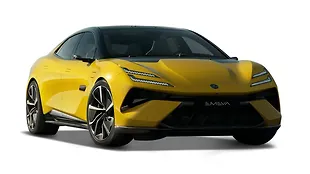Introduction
It was almost midnight driving back home after a long day at work. A long weekend was nearing and as usual I had no plans whatsoever. I was shuffling through radio stations trying to find some of the mindless Bollywood tracks to keep me awake when a jingle caught my attention. It was something that I had heard before. It was the voice of Amitabh Bachchan calling people out to experience ‘Khushboo Gujarat Ki’. In spite of being a bit slow, it didn’t take me long to put two and two together. Gujarat it is for the long weekend!
Navratri, the festival of nine nights to worship the nine forms of the invincible goddess Durga, is celebrated with much more enthusiasm and fervor in Gujarat than any other state. Dussehra , the tenth day on which Durga killed Mahishasura and Ram defeated Ravan, starts with the delicious fafda-jalebi combo. The gods have been generous enough to slay the El-Nino fears, which means, the festivities would be at their best.
The weekend had dawned and as I turned the ignition on, the returning monsoon had the sky lit up with thunder and lightning. With the Safari Storme – our long termer – by my side, the invincibility was seeping in. I had not explored Gujarat before, except for passing through the NH8 on my road trips further north. I have a liking towards old historic structures and I wanted to explore the countryside trying to find some interesting ones. Gujarat, hu awu chu (here I come)!

Adalaj Ni Vav
Hutheesinh and Gandhi Dham
The Hutheesinh temple in the old city of Ahmedabad was built by a rich businessman Seth Hutheesingh at an estimated Rs 8 lakh approximately 150 years ago. Built in stone, the beauty of this temple is the way stone is morphed to look like wood with its intricate carvings and the temple almost looks like a palace ‘Haveli’ with hallways and galleries. After a calorie/saturated fat/oil-laden breakfast that would make any nutritionist faint, the Hutheesinh temple was a good way to start proceedings on the day of Dussehra.

I am sure there would at least be a million Swaminarayan temples in Ahmedabad but the one in Kalupur (built in 1872) is the oldest and the headquarters of the NarNarayan followers amongst Jains. As you enter the temple complex through a huge ornate gateway, you get the first view of the temple along with an abode for the saints and priests and lodging facilities for devotees who have come from far. There is also a separate temple and hostel for women. This temple, built in Burmese teak wood with carvings and embellishments painted in bright colours, depicts the history of the religion and the beginnings of the India’s independence struggle.


As kids, we all have read about the Sabarmati Ashram in our history books. Situated on the now beautified banks of the Sabarmati, the memorial sits quietly under the shadow of trees. It includes the house where the late M.K. Gandhi used to live after his return from Africa and an exhibition hall decorated with posters and pictures and quotes glorifying the face of India’s freedom struggle.

The sun had just reached over my head and my next destination, the Akshardham temple, Gandhinagar, was about 25kms away. I started off, taking directions from google navigation, with the AC on full blast to keep the October heat at bay. The Akshardham temple is now a fortress with armed guards and no cellphones or cameras allowed inside. The temple complex is huge with a theme park for kids, massive gardens, a research centre, exhibition centres and of course the gigantic temple. There is a small museum in the basement under the temple atrium housing the gold-leafed idol of Swaminarayan. Once inside the temple complex, you are filled with a feeling of peace as you walk beside the sea of green with the carved stone roofs sheltering you from the scorching sun.
Adalaj ni Vav
Gujarat, in spite of being on the west coast of India, gets moderate rainfall and is largely arid with limited supply of fresh water available. Since borewells were not available 500 years ago, we had step-wells that went deep into the earth’s crust to avail the elixir of life. And if a Maharaja decides to build a step well for his queen, it has to be grand and exquisite and the ‘Adalaj ni vav’ or the ‘step-well of Adalaj’ is a perfect example. The step well is five stories deep with each storey built like a palace hallway with ornate, intricate carvings in stone. The slabs are cut in such a way that there is never direct sunlight on the floor of either storey but even the bottom of the well is amply lit. The Adalaj ni vav finds mentions in the travelogues of quite a few writers to have travelled the ancient trade routes from Arab countries.

The step well took me straight to the Maharaja’s era and when you talk about automobiles in India, the Maharaja cars are well known for their special coach building and customisations. AutoWorld – the museum with the collection of vintage cars’ owned by Mr. Pranlal Bhogilal – was a small detour on my way back to Ahmedabad and I couldn’t wait to have a glimpse of those rare vintage beauties. Sadly, most of the hundred plus cars are in a state of neglect, probably due to the lack of funds needed to maintain such a huge collection. With a heavy heart, I turned back towards Ahmedabad.

Modhera Sun Temple
Modhera Sun Temple
Every kid in India would have at least once dreamt of getting in to IIM-Ahmedabad and I had my dream almost come true until the authorities handed me over the visitor’s pass when I entered the gates. Ahmedabad city has some architecturally beautiful buildings either designed by or influenced by the renowned architect Louis Kahn and the Indian Institute of Management campus is one of them. My sister - an architect - could not stop explaining the design importance and it greatness even after a two-hour long tour of the campus.


The Sun Temple at Modhera was built in 1026 AD by King Bhimdev of the Solanki dynasty. The temple comprises of three elements – a reservoir, an open assembly hall and the sanctum sanctorum. The reservoir was supposed to store pure water which the temple and its devotees could access by climbing down the innumerable steps – which when seen in perspective become a geometrical marvel. There were 108 miniature shrines between those steps. The intricately carved roof of the assembly hall rests on 52 pillars representing the 52 weeks in a year. The walls have 12 niches with carvings showing the different aspects of the Sun God. The main temple is based on inverted lotus-based plinths and the three elements are aligned such that the rays of the rising and the setting sun would fall upon the idol on the summer solstice. The solid gold idol of the Sun God was placed in a pit 15 feet deep and filled up with gold coins. The temple was plundered twice by invaders and destroyed a second time, but, its remains will still baffle you with its architectural and geometrical genius while giving you an idea of its past grandeur.


After a sumptuous meal at a restaurant near the IIM, we set off to Modhera, 102 kms away from Ahmedabad on the road to Palanpur. I was surprised by the quality of roads that led me to the Sun temple. Here in Mumbai, 20 kilometres out of the city limits you will find meteoric craters, but this road, connecting the interior of Gujarat was excellent quality tarmac with hardly any potholes. I was inching my way through the narrow arterial road, up the hillock of the Modhera village. As I reached the summit, a more than 30 degrees slope was staring at me. I was scared at first and held the brakes unable to decide if I should proceed. But then, it occurred to me that I was driving the 4x4 Safari Storme and the creases on my brow disappeared into a smile. I put the car in 4L (four-wheel-drive low ratio) and started coming down the slope in first gear very cautiously. The car crawled down effortlessly making me think how easy it is to tackle such obstacles when you have a capable machine with you!

Ahmedabad - Old City
On my last day in Ahmedabad, I signed up for the early morning Heritage Walk organised by the Conservation and Research of Urban Traditional Architecture (CRUTA) and the local municipal corporation. The approximately one and a half kilometre walk takes over two hours as you tour through the interiors of the old city of Ahmedabad, built by King Ahmed Shah in 1499 AD. Though most of the city has evolved and modernised, the precinct is still the same with some centuries old ‘havelis’ still standing tall. Ahmedabad was a walled city on the banks of Sabarmati with 11 gates or ‘Darwajas’ for entry or exit. The city was divided into areas called ‘pol’s, each housing a certain section of society. The old city buildings have architectural influence of the invading Mughals, the immigrant Persians, the colonial Brits and the also the conquering Marathas.


I missed the last Garba night by minutes when I reached Ahmedabad late, thanks to the massive traffic jams in Kalyan and at the confused bridges of Bharuch. Being one of the very few people on earth with two left feet, I am not complaining at all. The Tata Safari had been a trusted companion on my maiden 1550km Gujarat voyage. With its imposing stance and the 140 plus horses under its hood, I had no problem cruising on the highway at good speeds. It is not quite manoeuvrable in the narrow by-lanes of the old city, but then you cannot expect an elephant to get through your apartment door! The 4x4 came handy on the unexpected concrete slope in Modhera. As I drove down the NH8 back to the routine grind, I was happy to have ventured out to discover the Indian heritage of architecture and design rather than being a couch potato!


![Tata Safari Storme [2012-2015] Image Tata Safari Storme [2012-2015] Image](https://imgd.aeplcdn.com/272x153/cw/cars/discontinued/tata/safari-storme-2012-2015.jpg?q=80)
![Tata Safari Storme [2012-2015] Left Front Three Quarter Tata Safari Storme [2012-2015] Left Front Three Quarter](https://imgd.aeplcdn.com/199x112/ec/9487/img/m/Tata-Safari-Storme-Front-three-fourth-14524_l.jpg?v=201711021421&q=80)
![Tata Safari Storme [2012-2015] Exterior Tata Safari Storme [2012-2015] Exterior](https://imgd.aeplcdn.com/199x112/ec/6E/3A/17472/img/m/Tata-Safari-Storme-46541_ol.jpg?v=201711021421&q=80)
![Tata Safari Storme [2012-2015] Right Side Tata Safari Storme [2012-2015] Right Side](https://imgd.aeplcdn.com/199x112/ec/AF/D5/16823/img/m/Tata-Safari-Storme-43918_ol.jpg?v=201711021421&q=80)
![Tata Safari Storme [2012-2015] Dashboard Tata Safari Storme [2012-2015] Dashboard](https://imgd.aeplcdn.com/199x112/ec/9487/img/l/Tata-Safari-Storme-Dashboard-14534.jpg?v=201711021421&q=80)
![Tata Safari Storme [2012-2015] Interior Tata Safari Storme [2012-2015] Interior](https://imgd.aeplcdn.com/468x263/ec/9487/img/l/Tata-Safari-Storme-Interior-14531.jpg?v=201711021421&q=80)























